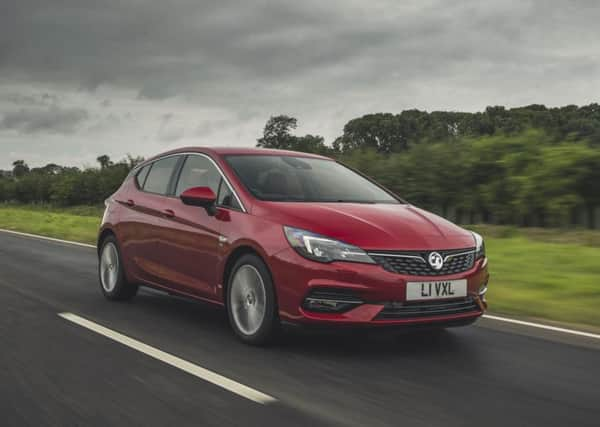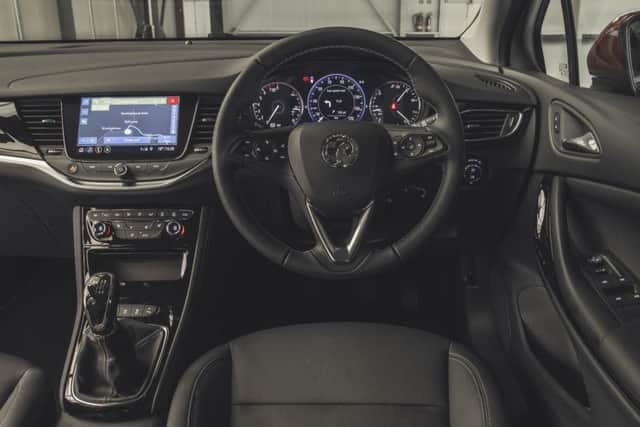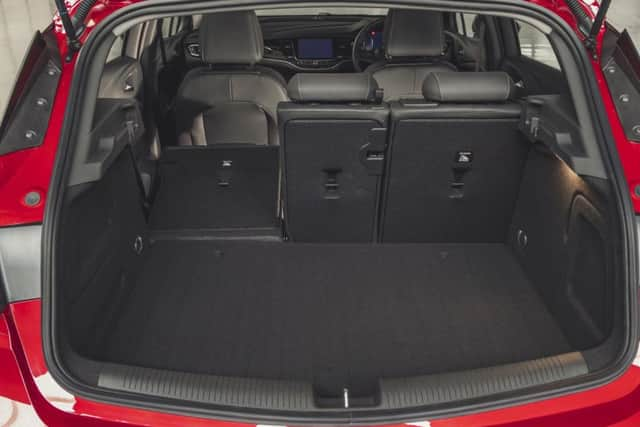Review: Vauxhall Astra


Yes, it’s the Vauxhall Astra, built in Cheshire but perhaps not for much longer. Vauxhall and its German sister, Opel, are now part of the French concern Peugeot (PSA). The future of the important factory at Ellesmere Port depends on what PSA’s brass thinks of the Brexit terms if Britain leaves the European Union.
On its debut in 1979 the Astra was the first Vauxhall to have front-wheel drive, built by Opel in Germany. UK production started in 2009. We are now on the seventh version of the five-door hatchback and Tourer estate from 2015 with substantial weight loss. There was a “facelift” this autumn with fuel-saving details like active slats in the face and slicker underbody panels on a lower chassis. The major changes are to the suspension, with altered shock absorbers and new settings to measure up to the Golf, Focus and, left field, the Mazda3. All bar the Mazda are Top Ten regulars in Britain and around Europe. You could like any of them.
Advertisement
Hide AdAdvertisement
Hide AdThis will be the last Astra without French mechanical implants. Prices start at £18,885 for the hatchback and £20,355 for the estate. The petrol and diesel turbo engines have German Opel heritage. All have three cylinders. There is a petrol 1.2 with outputs of 108bhp, 128bhp and 143bhp. A petrol 1.4 (tested here) also gives 143bhp but with more torque to make the most of the standard CVT automatic gearbox. The diesels are 1.5 litres with electronic turbochargers giving 104 and 120bhp – both rated at around 64mpg and 90/92g. A nine-speed auto shift is available with the 120bhp diesel.


The entry trim is SE, which has sensible 16-inch alloys, air con, cruise control and speed limiter, a small touch screen. You’ll be encouraged to move up to the SRi which brings collision busters such as emergency braking, lane departure advice and collision warning. However, the price leaps to £21,895 and if you want the SRi Navigation then that is £22,595. All these prices are for the 53mpg 108bhp petrol hatchback. If you are tempted by diesel the 104bhp SE is £19,895. On paper it should give you an extra 10mpg – but at higher pump prices.
Vauxhall sent the 1.4 petrol SRi in a trim called VX-Line Nav. The standard price is £25,635 which is quite a lump for an Astra, Golf, Focus or indeed Mazda3 and the rest of the emerging contenders for lower premium honours. Consider that you can have a Mercedes-Benz A-Class for around £23,000.
Of course the enabler this days is the contract hire system, which spreads the cost over three or four years at a monthly rate, with a lump down payment and a final buyout or walk away clause. It is a tempting to have a new car in your life without shelling out all the money at once. In reality, you pay a massive interest rate and are limited to a relatively small annual mileage or pay a penalty.
The car I tested had a final price of £28,230. The “extras” included a slim spare wheel, a reasonable £110. However, front and rear parking sensors added £480 which on a car at this price level you’d expect as standard fit, along with a rear view camera which was absent. Other add-ons were Vauxhall emergency call (£415), a “climate pack” bringing a heated windscreen, steering wheel and front seats for £660. The silver paint was £655. Traffic sign reading and pedestrian spotting added £275.


The Astra followed a much more powerful and expensive and luxurious Jaguar XE with all-wheel drive. As an everyday car I preferred driving the Astra. It was nippy off the mark and responsive in the normal legal speed bands without the familiar risk of exceeding speed limits in “fast cars”. Also, the rear passenger space was roomier. It is several years since I drove the previous Astra but I remember liking it. I can’t “notice” the improvements in the suspension but it handled well enough on its flashy two-tone 18-inch wheels and Bridgestone Turanza tyres. The Focus may still have the edge but there are more important things in life.
Happily, the instrument layout is mostly traditional, with a medium-sized screen and manual selector buttons below for essentials such as ventilation and, on these chilly mornings, the chair heaters.
The road speed sign is arguably too small, one of several white on black symbols. The parking brake is an old-timer handbrake which I don’t mind at all and there’s more of the era in an ignition key rather than a push-button starter. It is this familiar format of the Astra which makes it easy to manage.
Verdict: Smart family in which you can be happily unnoticed.